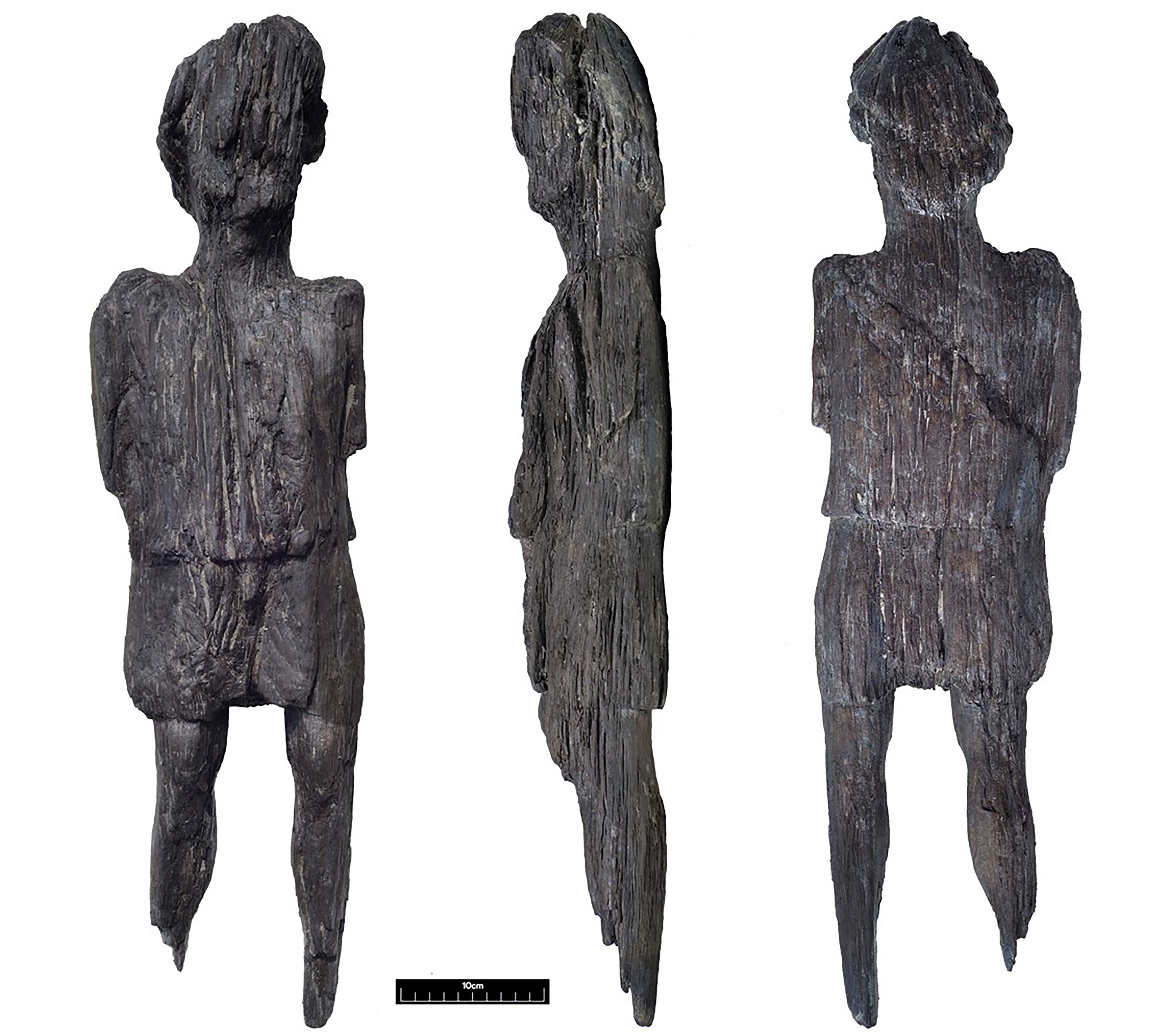‘Remarkable’ Roman wooden figurine discovered in ditch during HS2 digging
Rare find brings us ‘face to face with our past’, says expert

Archaeologists are celebrating the discovery of an “extremely rare” Roman wooden figurine unearthed during work on the HS2 rail project.
The model of a person wearing a tunic – thought to be around 2,000 years old – was preserved in a waterlogged ditch in Twyford, Buckinghamshire, in July last year.
It is highly unusual for wooden artefacts to survive for so long, but a lack of oxygen in the surrounding clay helped prevent the wood from rotting.
Archaeologist Iain Williamson said the level of preserved detail – from the figure’s hat to its hairstyle – “really starts to bring the individual depicted to life”.
He said: “Not only is the survival of a wooden figure like this extremely rare for the Roman period in Britain, but it also raises new questions about this site.
“Who does the wooden figure represent, what was it used for, and why was it significant to the people living in this part of Buckinghamshire during the first century AD?”
Wooden carved images were offered as gifts to the gods, but archaeologists said they could not be certain about the figure’s intended use.
A fragment of the 67cm tall and 18cm wide carving is being sent for radiocarbon dating, while tests are also being conducted to find out where the wood came from.
The figure is in relatively good condition but the arms below the elbows and feet have degraded. The head is slightly turned to the left, the tunic appears to be gathered at the waist, and the calf muscles are defined.

Shards of pottery dating from 43-70 AD were also uncovered in the ditch.
Jim Williams, a senior science advisor for the public body Historic England, said: “This is a truly remarkable find which brings us face to face with our past.
“The quality of the carving is exquisite and the figure is all the more exciting because organic objects from this period rarely survive.
“This discovery helps us to imagine what other wooden, plant, or animal-based art and sculpture may have been created at this time.”
The find was made by experts from Infra Archaeology, working for HS2’s contractor Fusion JV.
Helen Wass, head of heritage at HS2 Ltd, said: “In Buckinghamshire, our careful work has enabled us to build a much greater understanding of how the landscape was used by our ancestors, especially during the Roman period, and is brought to life further through incredible artefacts like this figure.”
She said the archaeology programme on the first phase of the HS2 project between London and Birmingham has provided a wealth of new information about the past.
But critics of the £10bn high-speed railway, which when completed will run from London to Crewe and Manchester, have accused the company of public relations spin, announcing discoveries while historical sites are “bulldozed over”.
Following a series of excavations last year, Joe Rukin, of the Stop HS2 campaign group, told The Independent: “It was inevitable there would be archaeological finds, but the crime is the number of sites known to exist that are not being properly investigated and are being bulldozed over without proper investigations, even in areas where it’s known there are lost villages or Roman settlements.”
He said: “They are doing what they do best – PR – which spins what is a massive negative – all the sites they’re destroying – and trying to turn it into a positive.”
Campaigners pointed out that a 2013 HS2 environmental survey had identified 969 archaeological sites on the route of phase one alone – the London to Birmingham leg – but that the company had decided to investigate only 60 of them.
HS2 said it carried out extensive surveys along the route to identify and characterise buried archaeological information, and that it works with Historic England and local authority experts.
An HS2 spokesperson said at the time: “Throughout our unprecedented archaeology programme, we have treated sites of archaeological interest with care. We have shared some of our findings made so far and look forward to continuing to tell the stories of Britain’s past.”
Join our commenting forum
Join thought-provoking conversations, follow other Independent readers and see their replies
Comments
Bookmark popover
Removed from bookmarks